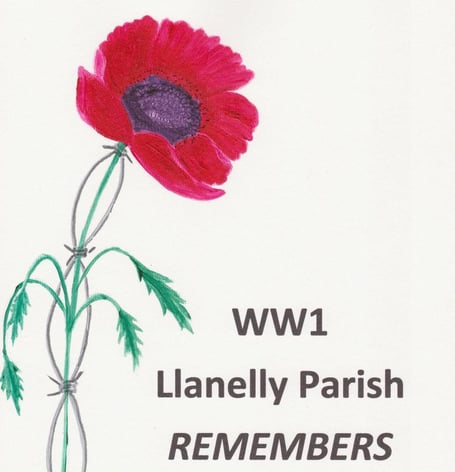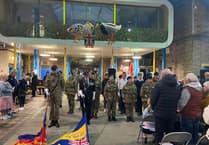AN exhibition commemorating the centenary of the end of World War 1, was created in the autumn of 2018 has resulted in a book being printed to immortalise the sacrifice the community made in the ’War to end all wars.’
Gilwern and Llanelly Parish’s part in the conflict has been made the subject of the book now in print. It was spearheaded by the Family History group of Gilwern’s U3A who had researched and prepared biographies of all local servicemen who served in the War, including those who survived.
It was so well received, that the Group were encouraged to print their findings to create a permanent form of remembrance, and so with generous financial support from Llanelly Community Council, "WW1 - Llanelly Parish Remembers" is now available for research and reference.
The book contains 33 poignant biographies of men killed in action, and another 115 of those who survived the fighting. Of particular interest are the highlighted stories of the six servicemen who were awarded the Military Medal.
The Family History group were fortunate to obtain photos from relatives in some cases, but at least a further 25 biographies had insufficient information, as half of the WW1 military records had been destroyed, but research will continue, and perhaps after the publication of the book, members of the public may come forward with additional facts.
The official launch of "WW1 - Llanelly Parish Remembers" will be on Wednesday, 27 November at 10.30am in The Village Hall and it is hoped that family members of those servicemen featured in the book will be able to attend the launch.
Copies of the book, with its dramatic cover designed by Lynda O’Keefe of the U3A Art Group, will be deposited in Gilwern Library, Gilwern Primary School, churches and chapels and other locations where they can be inspected.
If there is sufficient interest, further copies of the book will be produced for sale locally.
Some 40,000 Welshmen died during the First World War. The deaths were only one aspect of the tribulations which the Welsh, in common with the rest of Europe, suffered as a result of the conflict. The first day of the Battle of The Somme, 1st July 1916, was the worst in the history of the British army, with over 57,000 casualties of whom almost 20,000 were killed
In 1921, a foretaste of the depression which would haunt the subsequent years reached South Wales.
The war also had a profound impact upon the countryside, striking the final blow which destroyed the estates of the landed gentry. Organised religion, a dominant feature of Victorian and Edwardian Wales, went into rapid decline.





Comments
This article has no comments yet. Be the first to leave a comment.